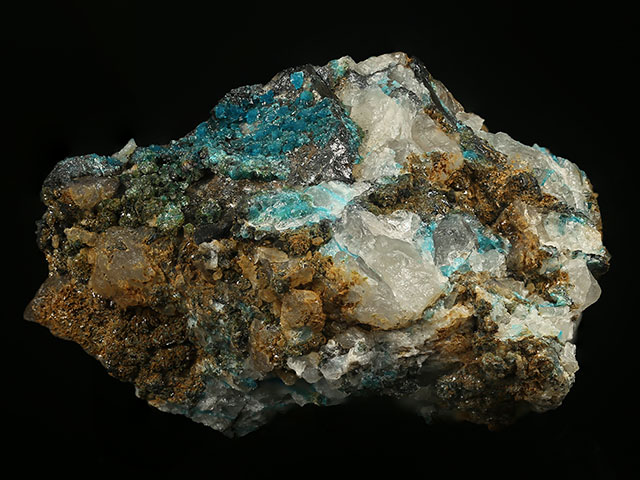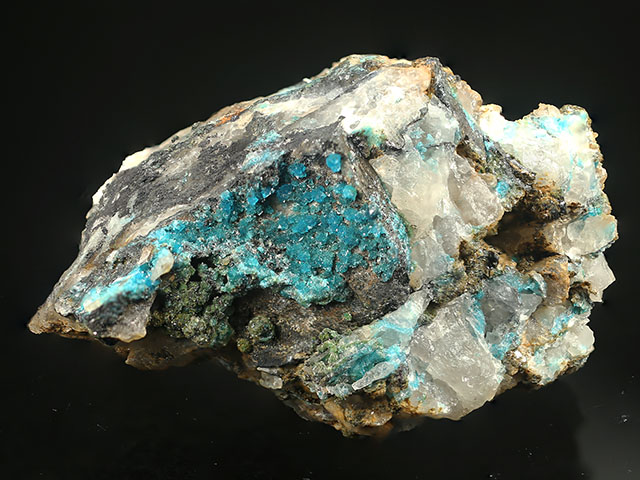Home > Laskowski Ⅶ – August 10 > MS1930 Turquoise
Turquoise - Sold
- Bishop mine
- Lynch Station
- Campbell County
- Virginia
- U.S.A.
- 6.4 × 4.1 × 3.6 cm – Small cabinet specimen (under 10 cm)
Turquoise is a hydrous copper aluminum phosphate, known since ancient times. Turquoise derives its name from French for Turkish, since the original Persian material followed ancient trade routes through Turkey (Pogue, 1915). Turquoise usually forms seams and nuggets admixed with clay, which confounded mineralogists until the discovery of turquoise crystals. Turquoise crystals from Virginia showed a crystallographic relationship with chalcosiderite, and permitted Schaller (1912) to revise the chemical formula of turquoise. Modern definitions of turquoise and related species are given in Foord & Taggart (1988). Crystallized turquoise remains a rarity worldwide, still best known from Virginia.
This specimen consists of a schist matrix with a 20 × 15 mm coverage of turquoise crystal botryoids. The crystal size averages 0.5 mm. From the collection of E.R. Laskowski (1949-2020), a mining engineer who retired to Tucson, Arizona.



